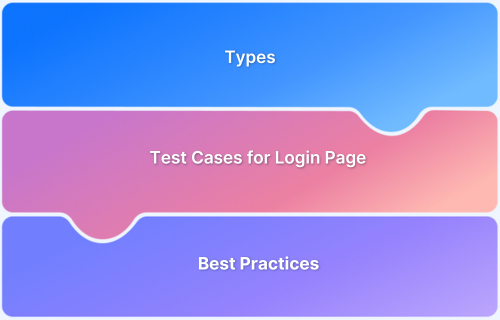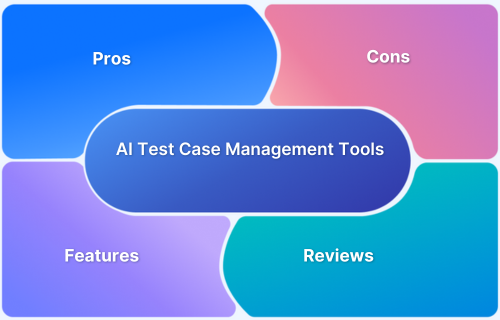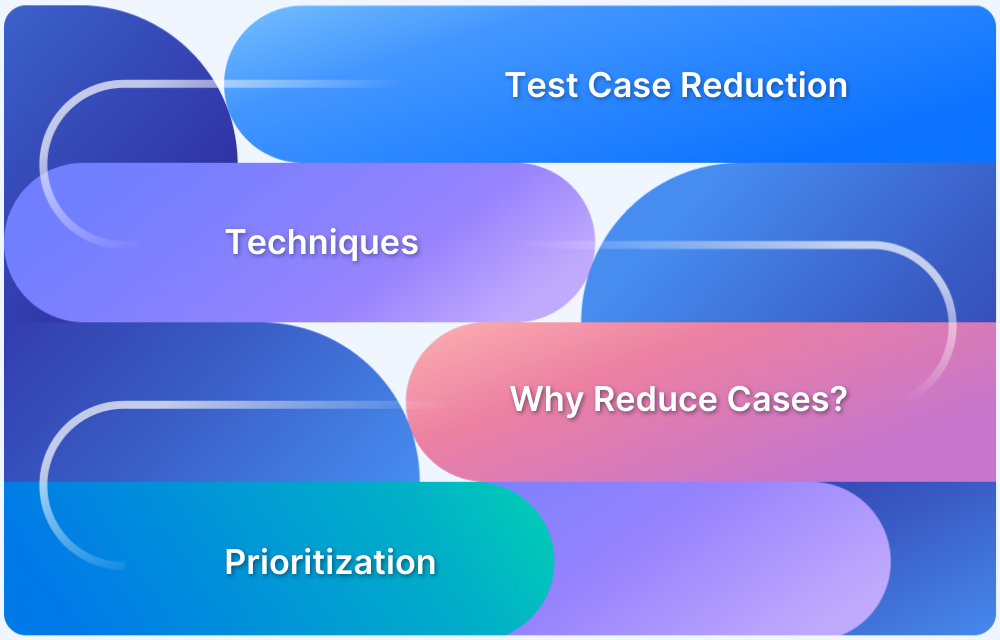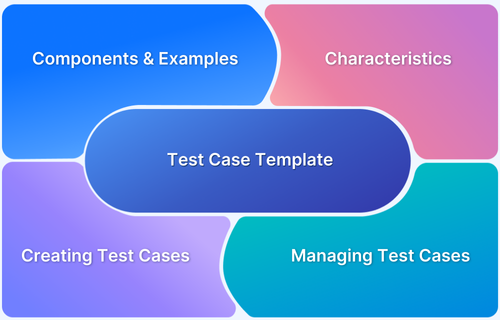As software test suites grow larger and code changes become more frequent, testing can become time-consuming and resource-intensive. Predictive Test Selection addresses this challenge by optimizing which tests to run, ensuring a faster, more focused testing process.
Overview
What is Predictive Test Selection?
Predictive Test Selection is a machine learning-based approach to software testing that helps teams run only the tests most likely to catch bugs for a given code change.
Instead of running the entire test suite after every commit (which is time-consuming and expensive), Predictive Test Selection predicts which subset of tests are relevant based on:
- Code change analysis: Which files, functions, or dependencies were modified.
- Historical test data: Which tests caught failures in the past for similar code changes.
- Execution history: How tests behave over time (flaky vs. reliable).
- Coverage data: Which parts of the code are exercised by which tests.
How it works
- Model training: A machine learning model is trained using historical data from commits, test runs, and failure logs.
- Prediction: For a new code change, the model predicts the probability of each test being impacted.
- Selection: Only tests with high likelihood of catching bugs are executed.
Benefits
- Speed: Cuts CI/CD time significantly by skipping irrelevant tests.
- Efficiency: Reduces infrastructure and compute costs.
- Focus: Surfaces the most critical tests to developers quickly
- Scalability: Enables large organizations with huge test suites to maintain fast feedback loops.
Example
- Without Predictive Test Selection: A full test suite with 50,000 tests may take 6 hours.
- With Predictive Test Selection: The model selects 3,000 most relevant tests, reducing runtime to under 30 minutes-while still catching the majority of defects.
This article covers the benefits, working mechanism, and advantages of using Predictive Test Selection, highlighting how it streamlines testing processes and improves efficiency for software teams.
What is Predictive Test Selection?
Predictive Test Selection is an advanced testing technique that uses machine learning and historical data to predict which tests are most likely to detect defects based on recent changes in the code.
Instead of running the entire test suite, it intelligently selects a subset of tests that are highly relevant, significantly improving the speed and efficiency of the testing process. This method minimizes unnecessary tests while maintaining high test coverage, making it a crucial tool for modern, fast-paced software development cycles.
BrowserStack’s Test Selection Agent leverages AI to implement Predictive Test Selection, streamlining the process by automatically identifying the most relevant tests to run. This enables teams to focus on critical areas of the code, reducing test execution time and accelerating the development process while maintaining robust test coverage.
How Predictive Test Selection Works
Predictive Test Selection leverages AI and historical data to intelligently choose which tests to execute, streamlining the testing process and improving efficiency. Here’s how it works:
- Data Collection and Analysis: The system collects data from previous tests, including test outcomes and code changes. It also considers metadata such as which parts of the code were modified, the frequency of changes, and the impact those changes had on previous tests.
- Machine Learning Models: Using the collected data, machine learning models are trained to recognize patterns and correlations between code changes and test results. These models learn from past data, such as which tests frequently detect defects and how specific code modifications impact functionality.
- Test Prediction: When a new code change is made, the model predicts which tests are most likely to uncover defects based on the patterns it has learned. It then selects a subset of tests that are predicted to provide the most value for the current build.
- Test Execution: Only the selected tests are executed, reducing the number of tests run without sacrificing test coverage. This ensures faster execution times and more immediate feedback on code changes.
- Continuous Learning: As tests are run and new data becomes available, the system continues to learn. The AI model is constantly updated with new test results, improving its predictions over time to select the most relevant tests as the codebase evolves.
Through this process, Predictive Test Selection helps teams quickly identify critical issues, reduce testing time, and ensure that resources are used efficiently.
Use Cases of Predictive Test Selection
Here’s how Predictive Test Selection can be applied across various testing stages to improve efficiency, reduce costs, and enhance software quality:
1. Unit Testing
Unit testing focuses on verifying the smallest units of code for correctness. Predictive Test Selection enhances this process by running tests only on the specific units that have been modified, rather than executing the entire suite of unit tests. This leads to:
- Faster Feedback: Developers receive immediate feedback on only the affected code, rather than waiting for an entire suite to complete.
- Cost Efficiency: By addressing errors early in the development cycle, fixes are easier and less costly to implement.
- Reduced Test Time: A subset of unit tests, targeting only changed code, executes much faster, providing quicker results for developers.
2. Integration Testing
Integration testing ensures that different modules of code work together as expected. With Predictive Test Selection, integration testing can be initiated earlier in the development process (a practice known as “shifting left“). Key benefits include:
- Focused Test Execution: Predictive models select only the tests that are most likely to reveal issues across different modules, improving test efficiency.
- Faster Error Detection: As integration tests run more frequently with relevant tests, errors can be identified earlier, making them easier and less costly to fix.
- Reduced Delays: Continuous testing with a focused subset of integration tests allows for quicker feedback, avoiding delays caused by waiting for multiple code changes to accumulate.
3. Regression Testing
Regression testing ensures that new code changes don’t break existing functionality. Traditional regression tests can be lengthy, running for hours and sometimes overnight. Predictive Test Selection optimizes this by:
- Selective Test Execution: Identifying the most relevant tests to run based on recent code changes, reducing the overall test suite size.
- Faster Flaw Detection: By focusing on the areas most likely affected by recent changes, issues are isolated quickly, leading to faster resolutions.
- Incremental Testing: Instead of running exhaustive regression tests at the end of a cycle, incremental testing ensures that bugs are caught earlier, preventing large-scale errors during the final stages of development.
4. Performance and Security Testing
Performance and security tests are essential, but can be time-consuming. Predictive Test Selection helps by:
- Targeted Testing: Selecting only the most relevant performance or security tests based on recent changes to the code, reducing testing time without compromising quality.
- Efficient Use of Resources: By running focused tests, the process becomes faster, allowing more time for other testing activities and ensuring high performance and security without delays.
- Operational Efficiency: As these tests can be as lengthy as full regression tests, focusing on the most relevant ones ensures that time and resources are used optimally.
5. Continuous Integration and Deployment (CI/CD)
In CI/CD environments, where code changes are frequently integrated and deployed, Predictive Test Selection is invaluable for:
- Real-Time Feedback: Predictive models ensure that only the most relevant tests are run after each code merge, providing quick feedback on the impact of changes.
- Optimized Resource Usage: By selecting relevant tests dynamically, Predictive Test Selection helps teams test more frequently without overloading systems or consuming excessive resources.
- Speeding Up the Development Cycle: By integrating Predictive Test Selection into CI/CD pipelines, teams can maintain a faster pace of development, quickly identifying and resolving defects as new changes are integrated.
Benefits of Predictive Test Selection
The benefits of Predictive Test Selection include enhanced efficiency, faster feedback cycles, and optimized resource usage, all of which contribute to a more streamlined and cost-effective testing process.
- Faster Test Execution: By selecting only the most relevant tests, Predictive Test Selection significantly reduces the time needed to run tests, providing quicker feedback to developers.
- Improved Test Coverage: Even with fewer tests, the selection process ensures that the most critical areas of the code are tested, maintaining high test coverage without unnecessary execution of tests.
- Resource Optimization: Predictive Test Selection reduces the number of tests that need to be run, saving computational resources, server time, and reducing costs associated with large-scale test executions.
- Early Defect Detection: By focusing on tests most likely to reveal defects, issues are identified earlier in the development cycle, allowing for faster resolution and reducing the cost of fixing bugs.
- Reduced Testing Time: With only a subset of tests being executed, the overall time spent on testing is drastically minimized, making it ideal for continuous integration and delivery pipelines.
- Scalability: As projects grow and codebases expand, Predictive Test Selection helps maintain efficiency by adapting to increasing code complexity and the growing size of test suites.
- Improved Developer Productivity: Developers receive quick feedback, allowing them to address issues faster, which in turn accelerates the development process.
- Cost-Effective: Reduced infrastructure and testing costs come from minimizing the number of tests and the resources required to run them, offering a more budget-friendly approach to testing.
- Enhanced Accuracy: Machine learning models continually refine their predictions, improving the precision of test selection and ensuring that the most relevant tests are executed each time.
Conclusion
Predictive Test Selection takes the guesswork out of deciding which tests to execute, enabling teams to identify and run only the most relevant test cases. By focusing on code changes and predicting the most likely areas for defects, it reduces test execution time, optimizes resource usage, and enhances overall testing efficiency.
BrowserStack offers the Test Selection Agent, an AI-driven tool that helps teams seamlessly implement Predictive Test Selection. This AI-driven solution, combined with BrowserStack Test Management, enables teams to efficiently organize, track, and manage their test cases. By centralizing test case management, teams can prioritize critical tests, streamline execution, and ensure that testing remains both fast and effective.








